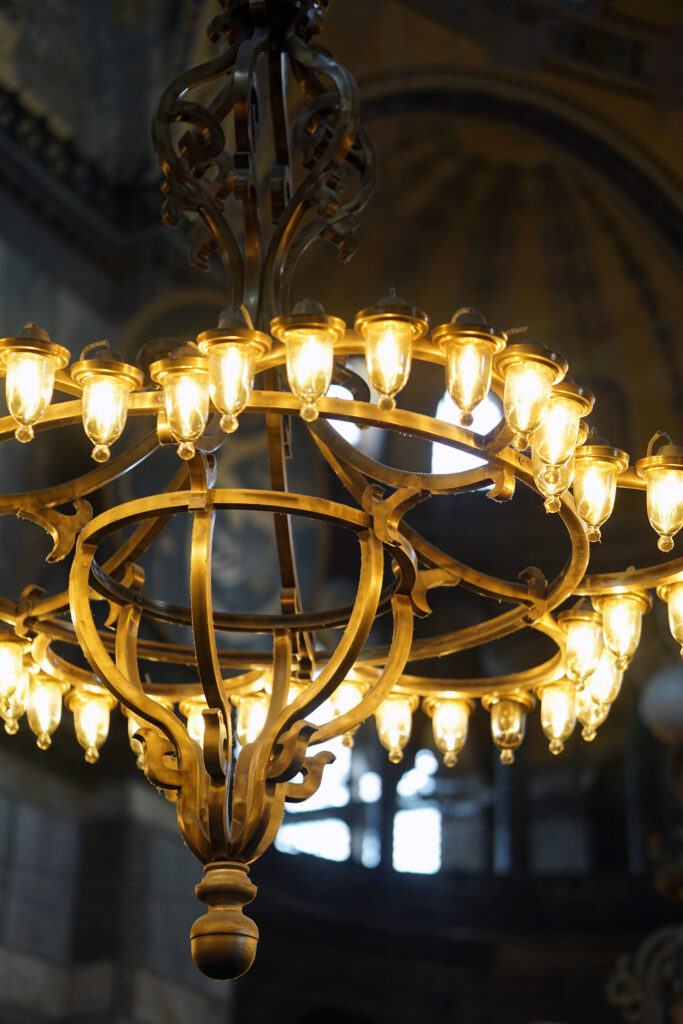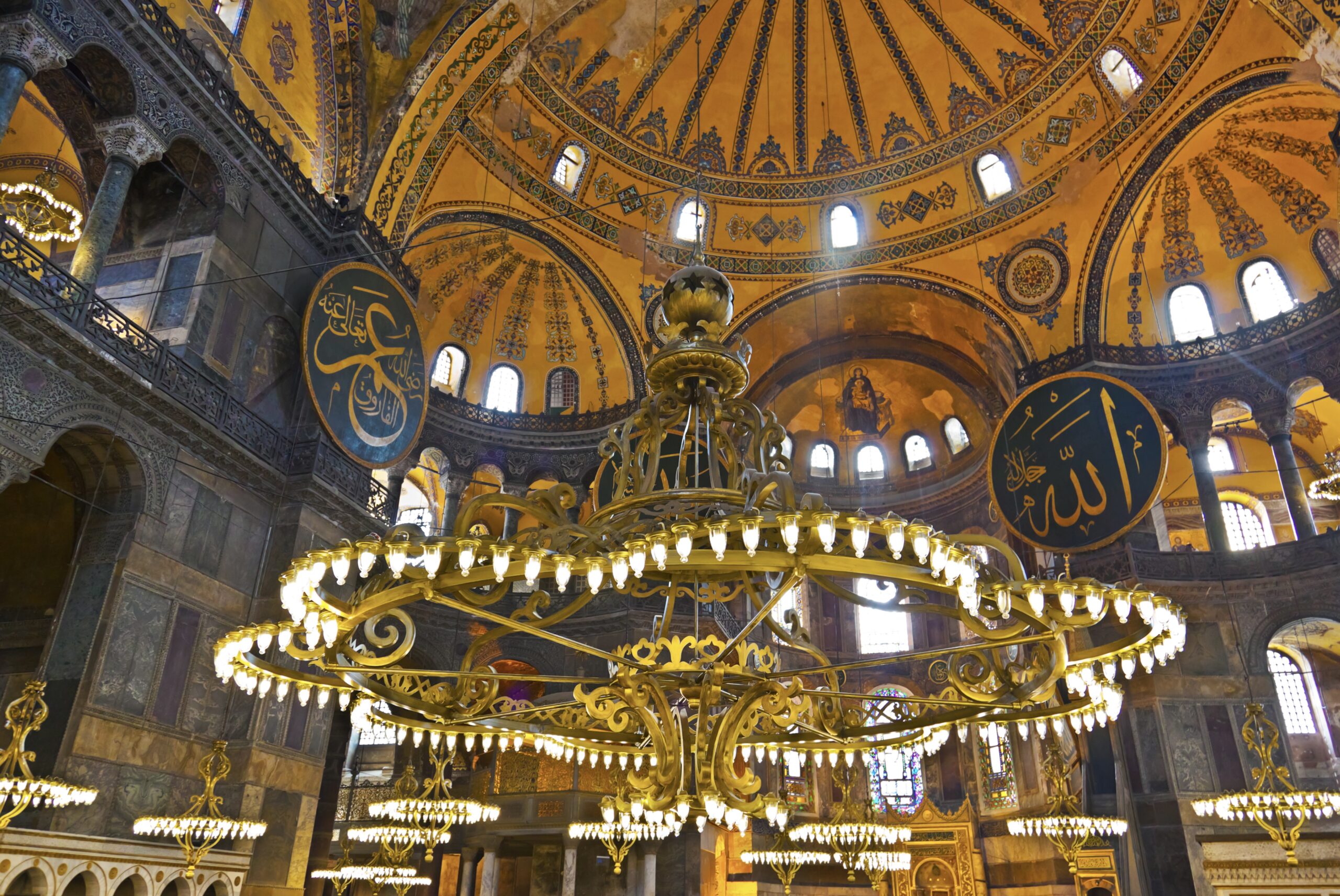Hagia Sophia, located in Istanbul, Turkey, stands as a testament to the rich history and cultural heritage of the region. Originally built in the 6th century during the reign of Emperor Justinian I, Hagia Sophia has served as a symbol of religious and architectural significance for over a millennium. Throughout its long history, the magnificent structure has witnessed the rise and fall of empires, religious transformations, and countless renovations. Among its many treasures are the exquisite chandeliers that adorn its interior, each reflecting the grandeur, opulence, and spiritual significance of Hagia Sophia.
The origins of Hagia Sophia’s chandeliers are shrouded in mystery, with little documentation available from the early Byzantine period. It is believed that the earliest chandeliers in Hagia Sophia were likely simple, utilitarian fixtures made from materials such as bronze or iron. However, as the Byzantine Empire flourished and the cathedral underwent extensive renovations and embellishments, the design and craftsmanship of its chandeliers became more elaborate and ornate. These chandeliers served not only as sources of light but also as symbols of wealth, prestige, and religious devotion within the cathedral.
With the conquest of Constantinople by the Ottoman Empire in 1453, Hagia Sophia underwent architectural modifications to reflect its new Islamic identity. The Ottomans introduced new elements of design and decoration, including the incorporation of Islamic calligraphy, geometric patterns, and arabesque motifs into the chandeliers. Ottoman chandeliers were characterised by intricate metalwork, coloured glass, and mosaic work, reflecting the artistic sophistication of the empire and its cultural fusion of Byzantine and Islamic influences.

Chandeliers have played a multifaceted role in the history and symbolism of Hagia Sophia. As sources of light, they illuminated the vast interior of the cathedral, creating a warm and ethereal ambiance that enhanced the spiritual experience of worshippers and visitors. As works of art, chandeliers symbolised the wealth, power, and religious devotion of the Byzantine and Ottoman empires, serving as focal points of reverence and awe within the cathedral-turned-mosque.
Over the centuries, Hagia Sophia’s chandeliers have undergone numerous renovations, restorations, and repairs to preserve their historical integrity and ensure their continued functionality. Skilled craftsmen and artisans have employed traditional techniques and modern technologies to repair damaged components, replace missing parts, and restore the chandeliers to their former glory. Conservation efforts have also been undertaken to protect the chandeliers from environmental damage, such as humidity, dust, and pollution, which can degrade their materials and aesthetics over time.
Today, Hagia Sophia’s chandeliers continue to captivate visitors from around the world, offering a glimpse into the past and a celebration of human creativity and ingenuity. Through careful preservation and conservation efforts, these chandeliers will continue to shine brightly, illuminating the halls of Hagia Sophia for generations to come. As symbols of cultural heritage and architectural excellence, they serve as a testament to the enduring legacy of this iconic monument and the enduring spirit of Turkey’s history and culture.




 No products in the basket.
No products in the basket. 
